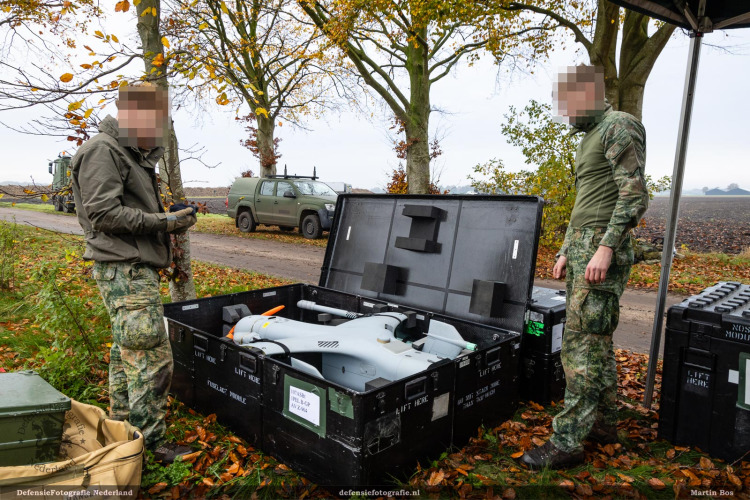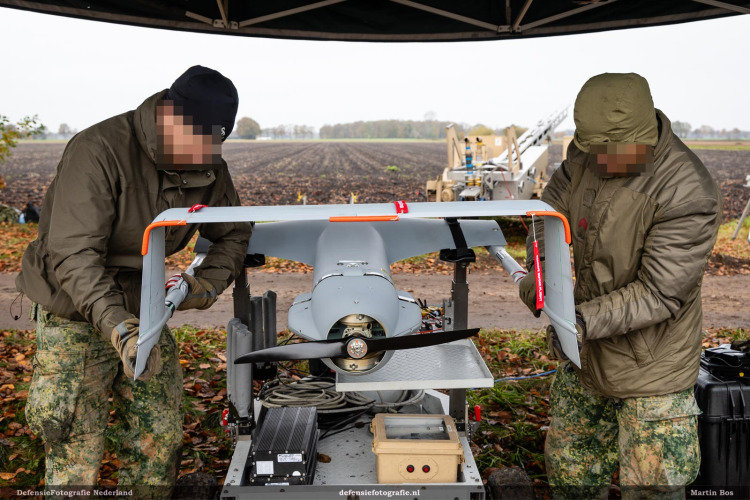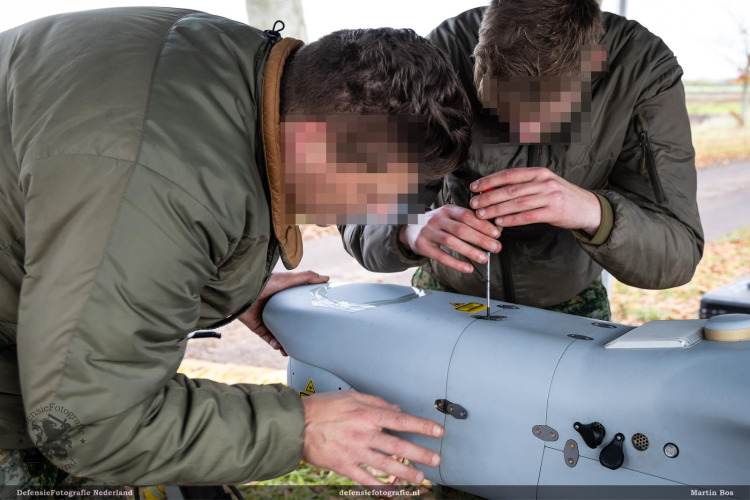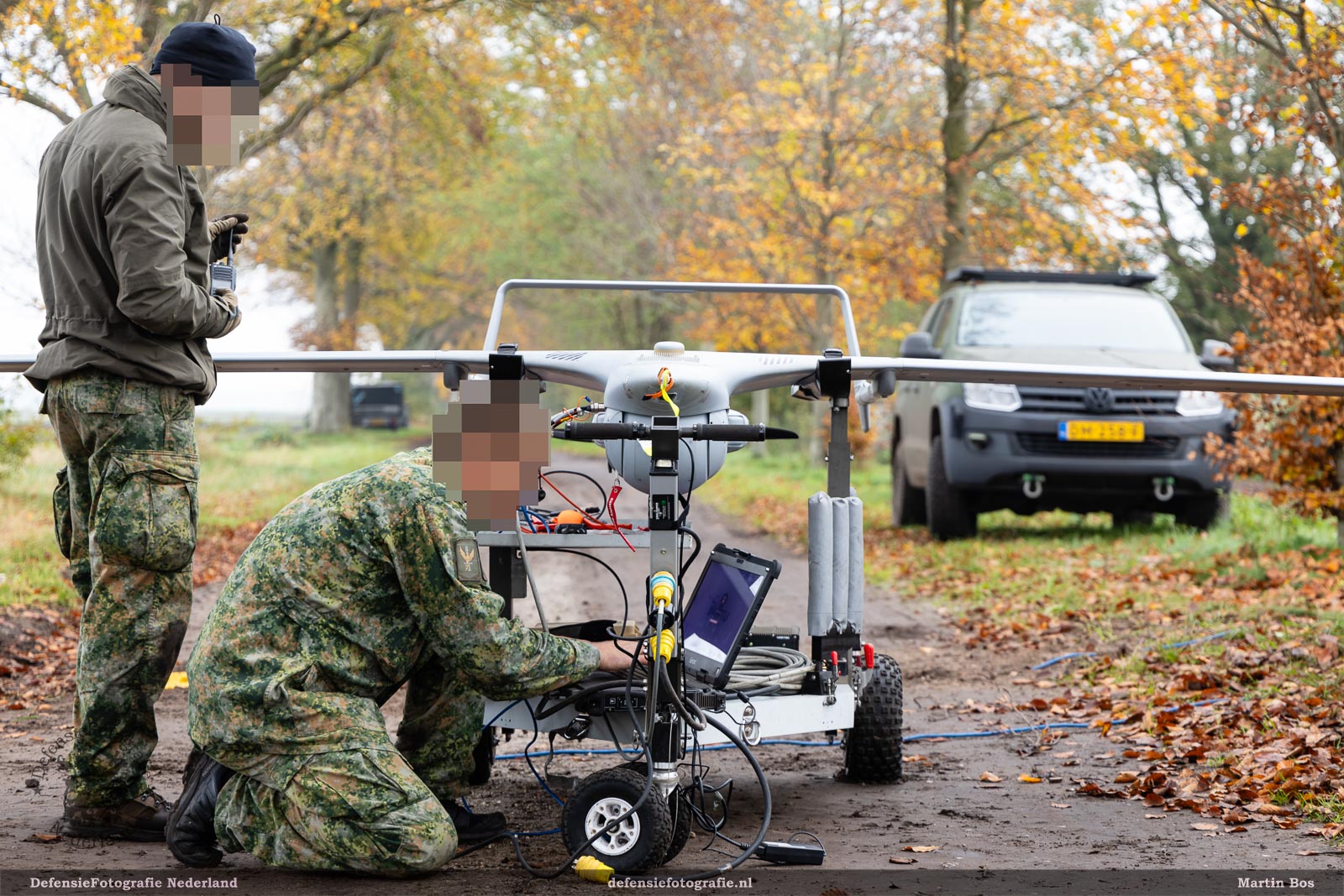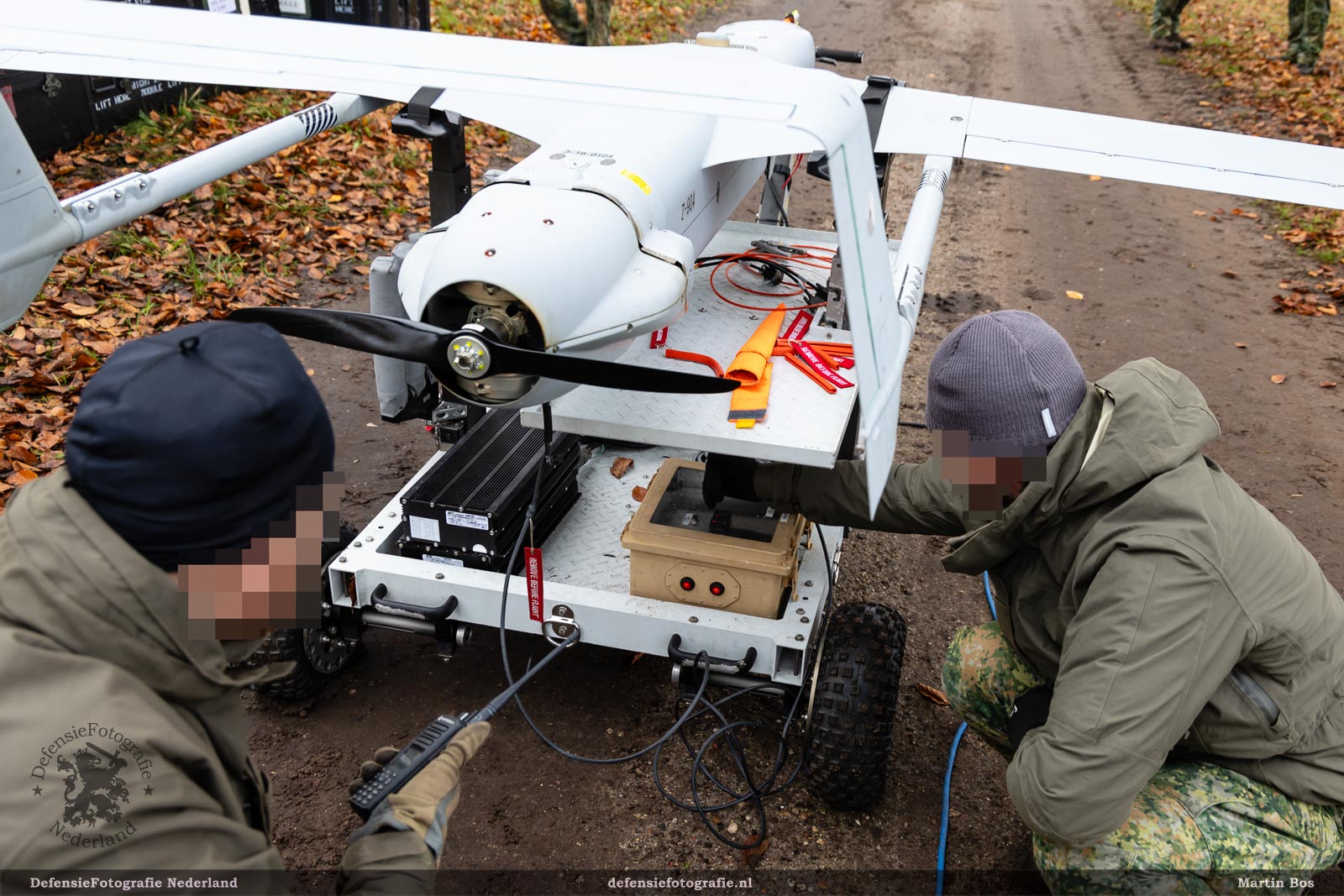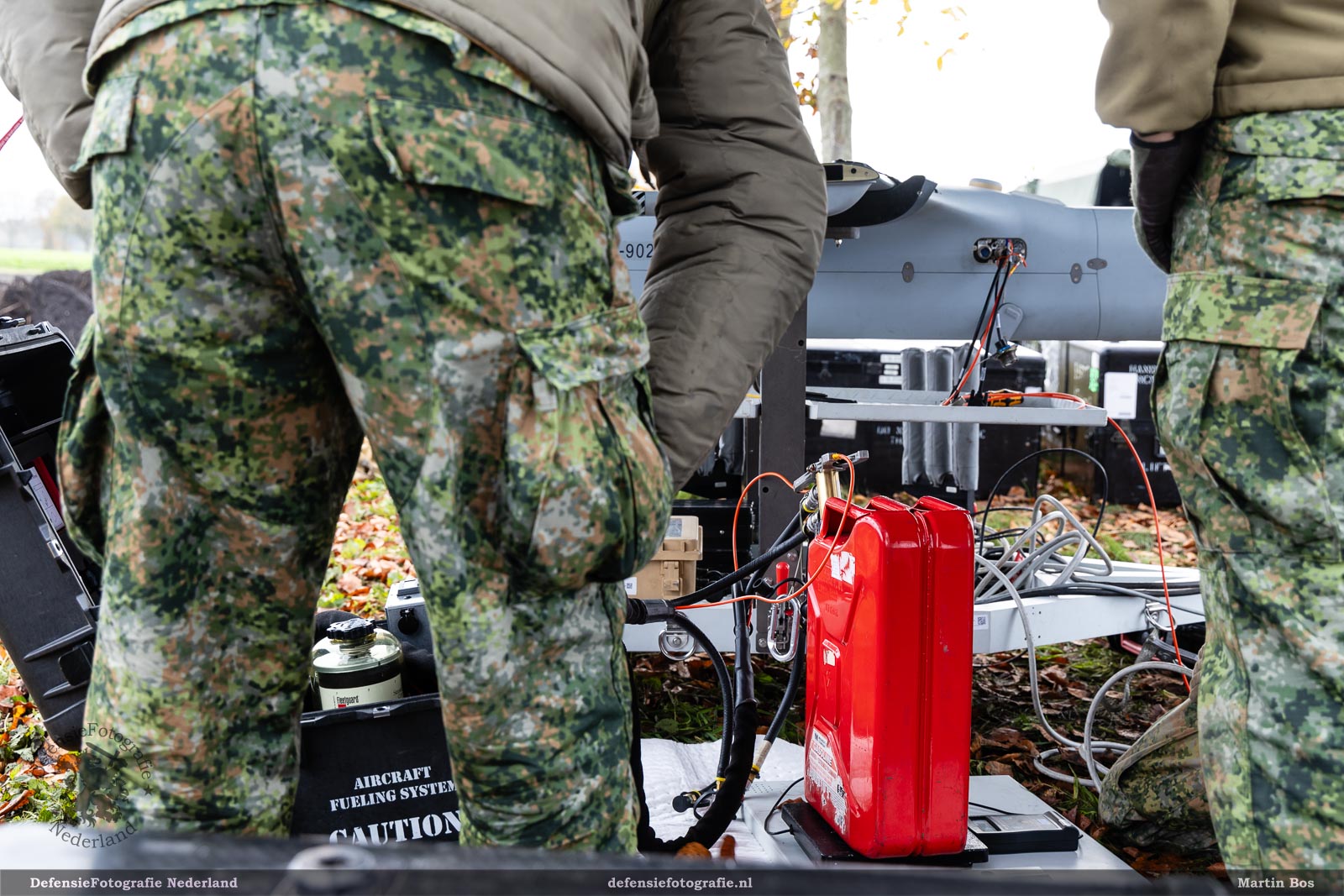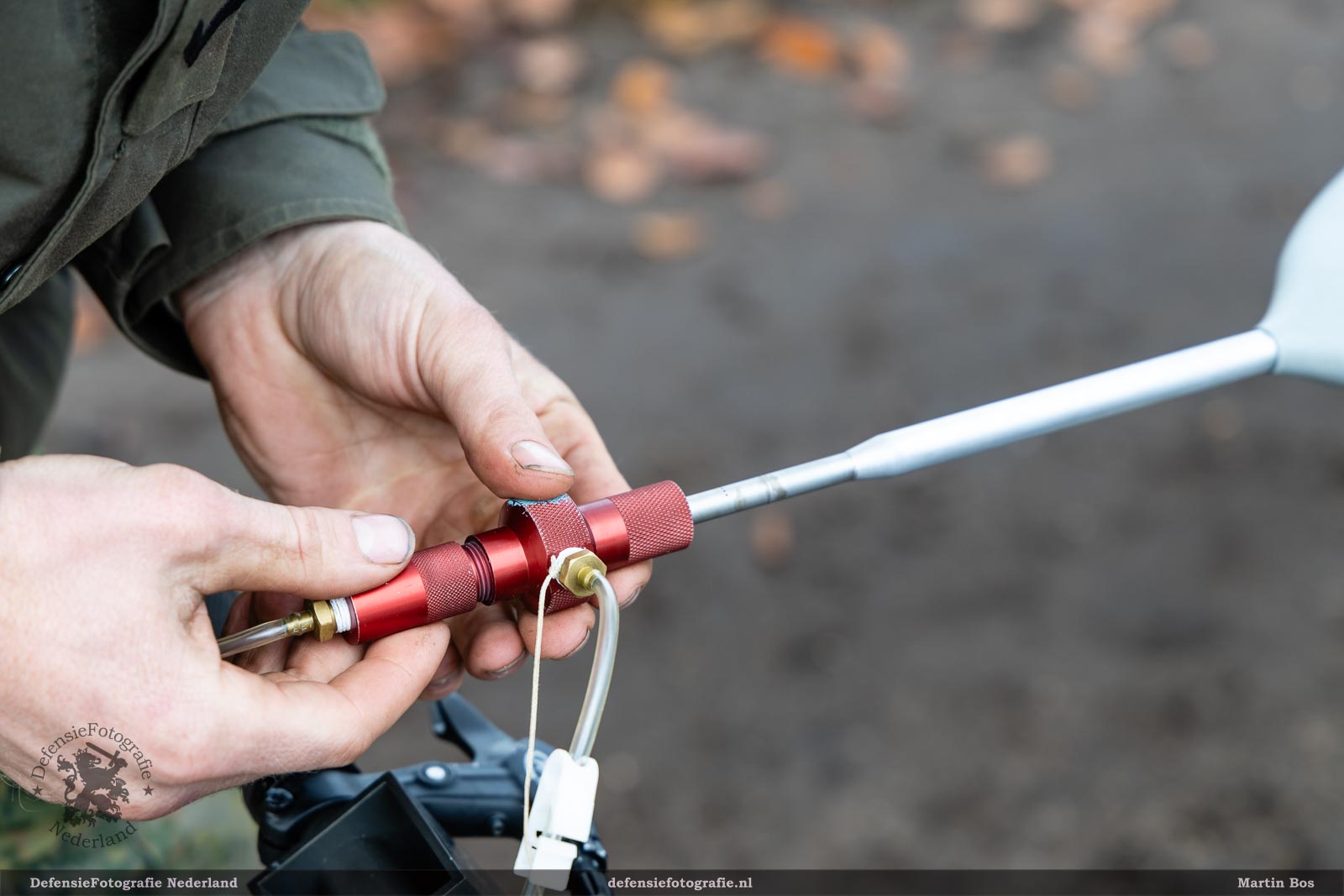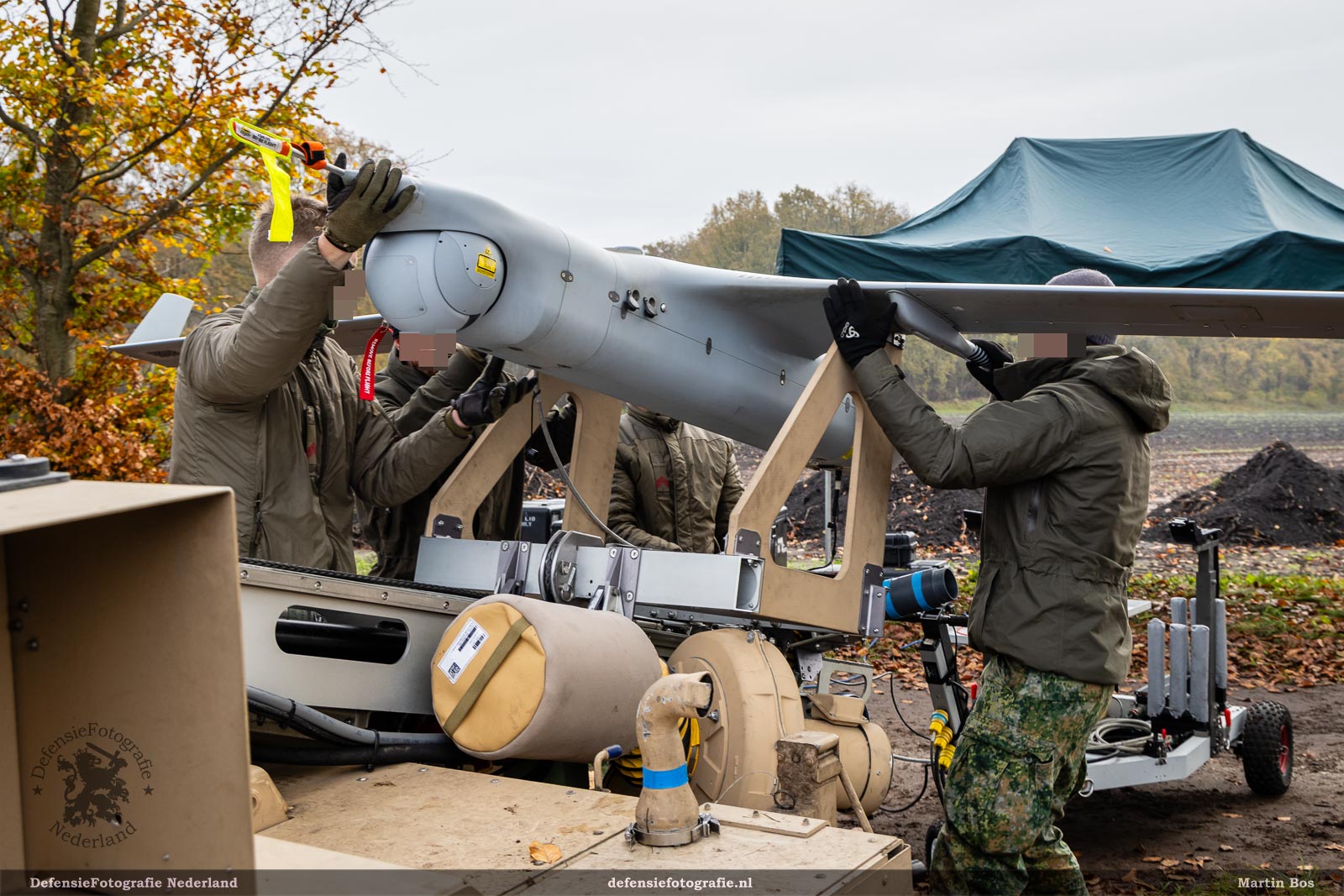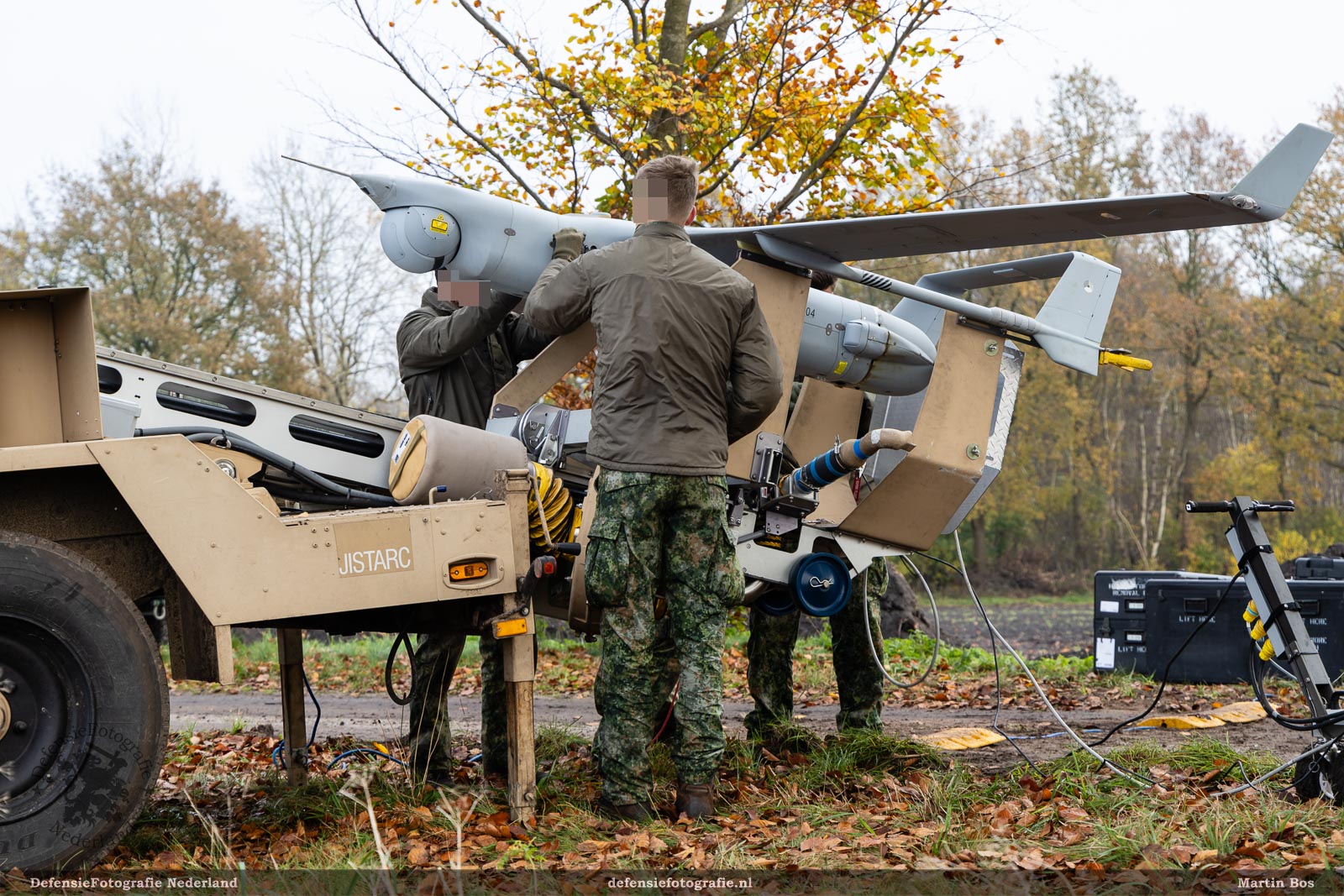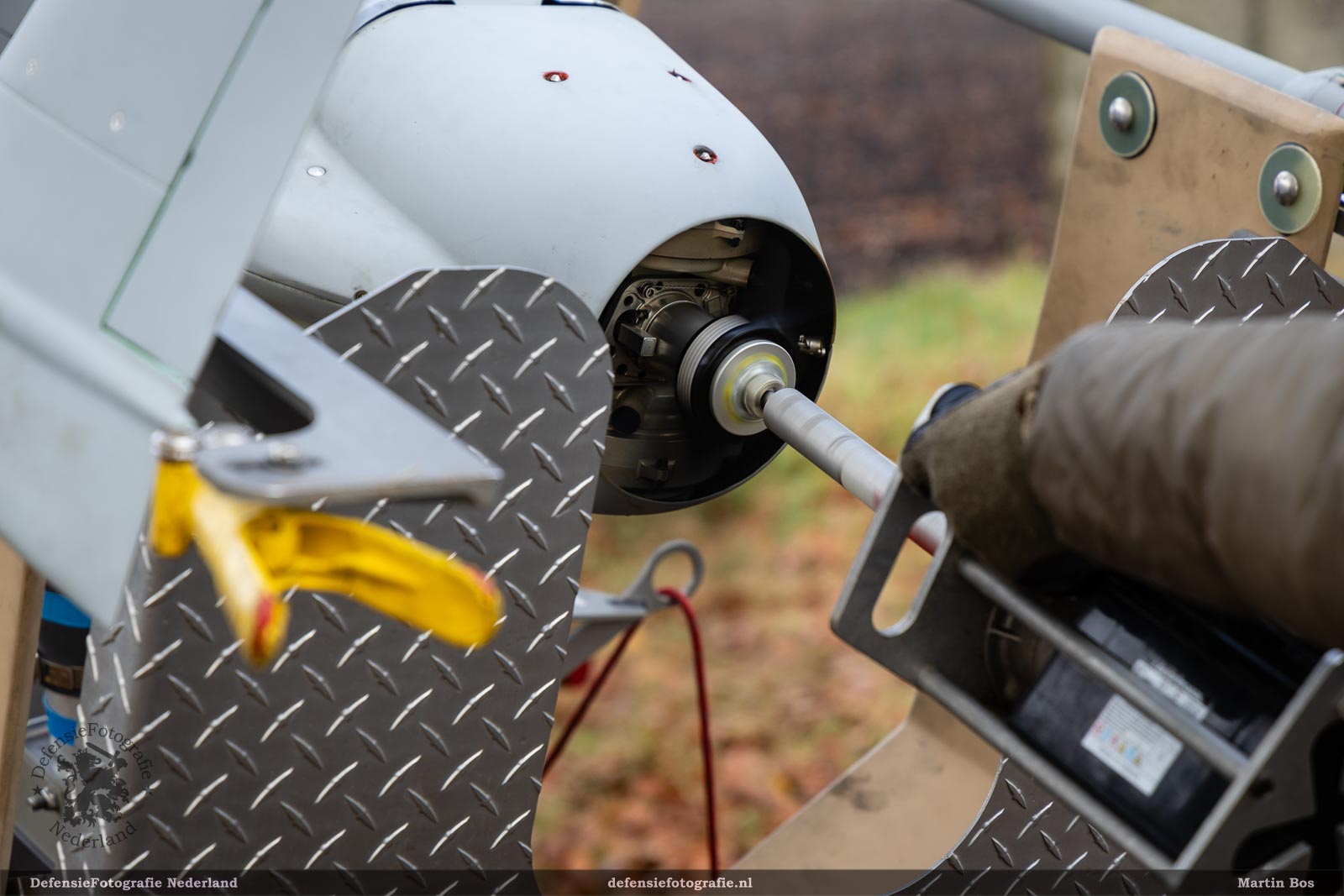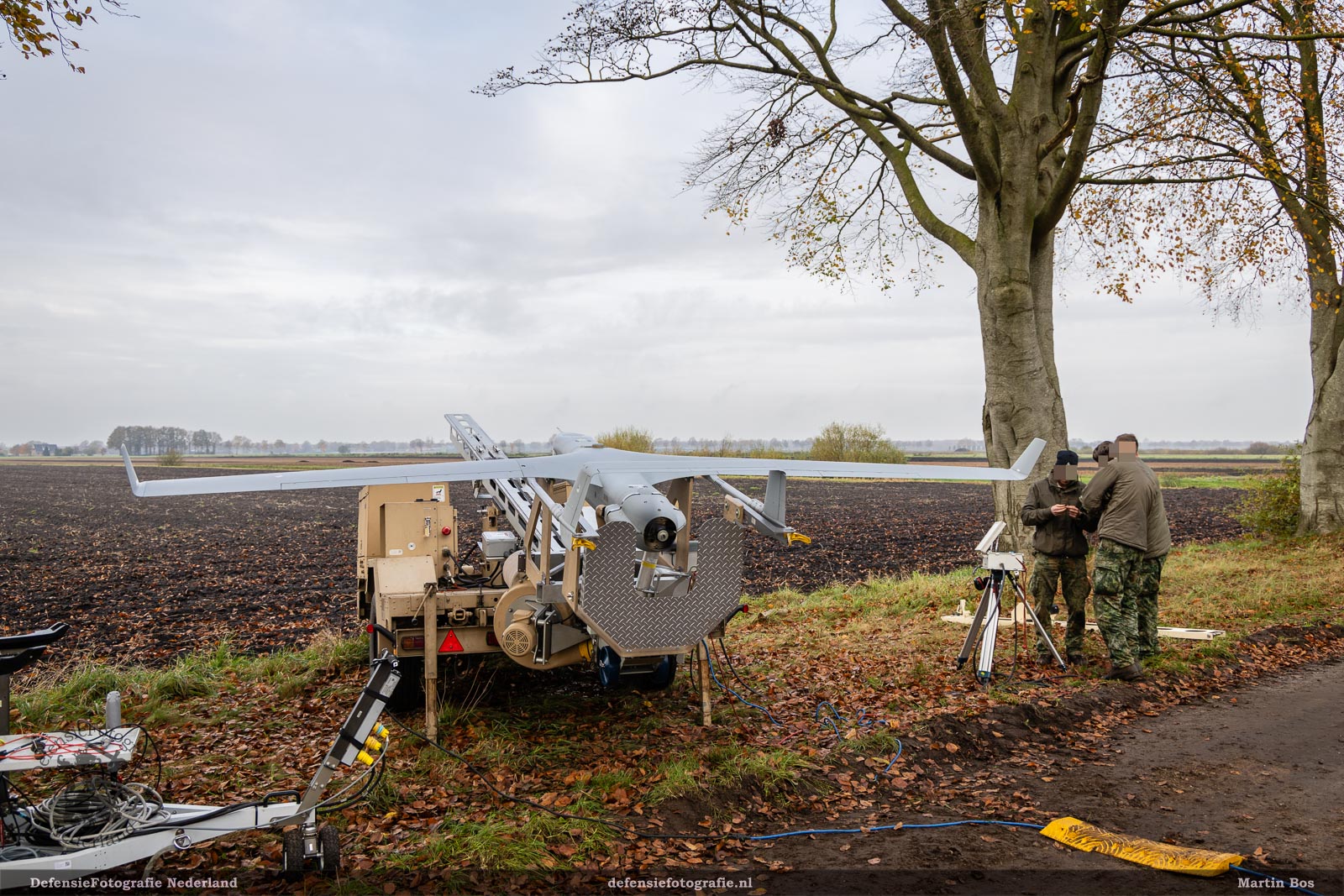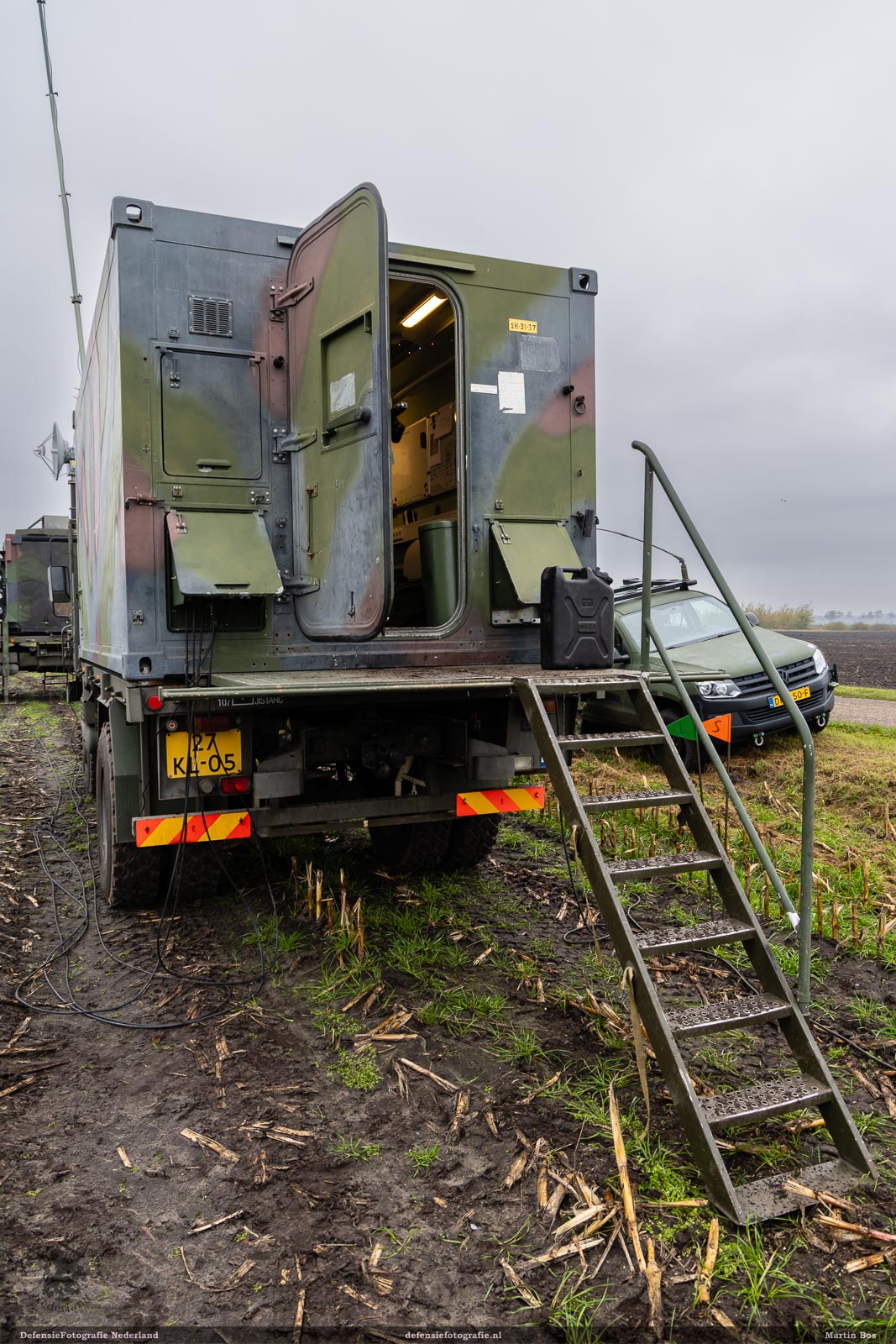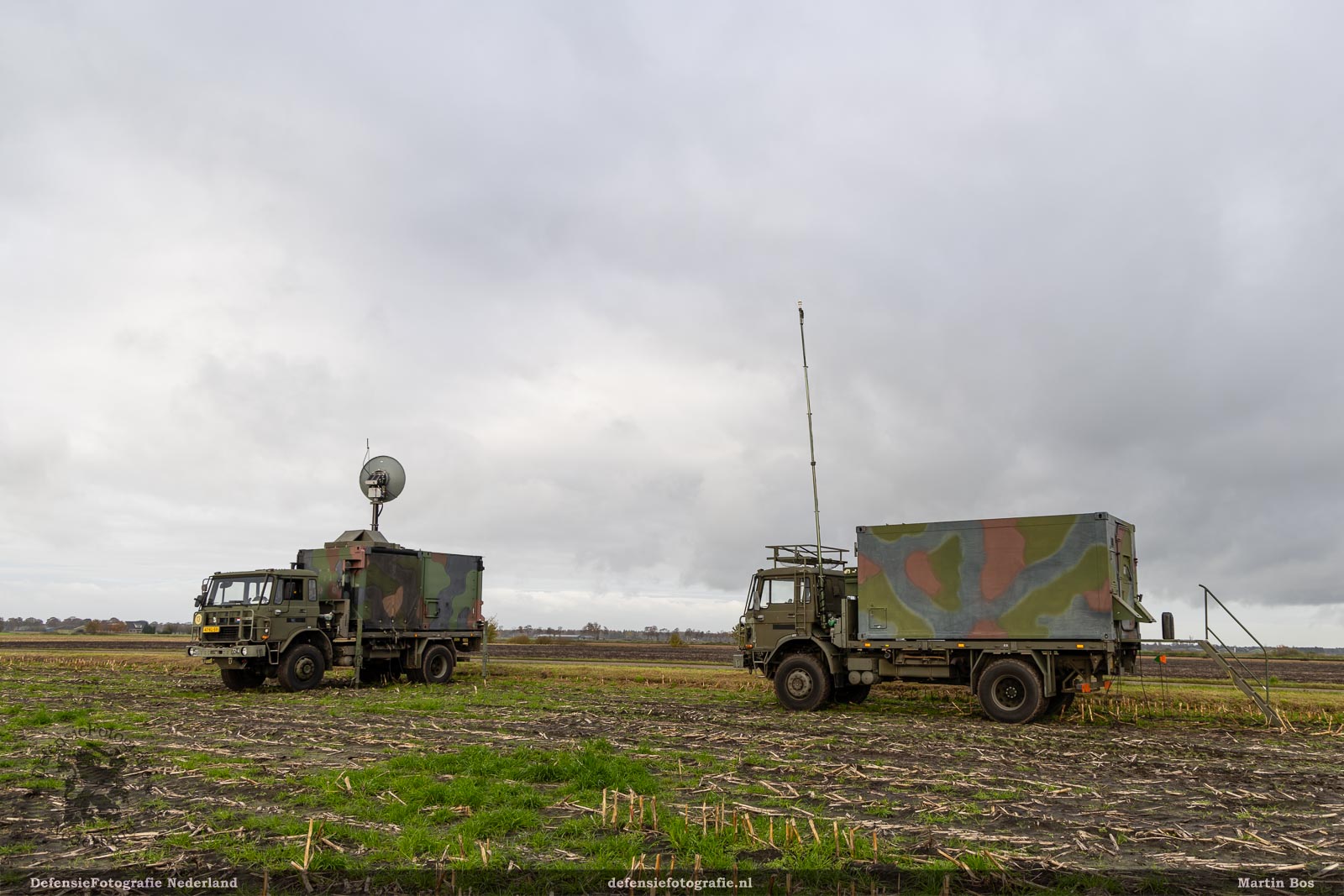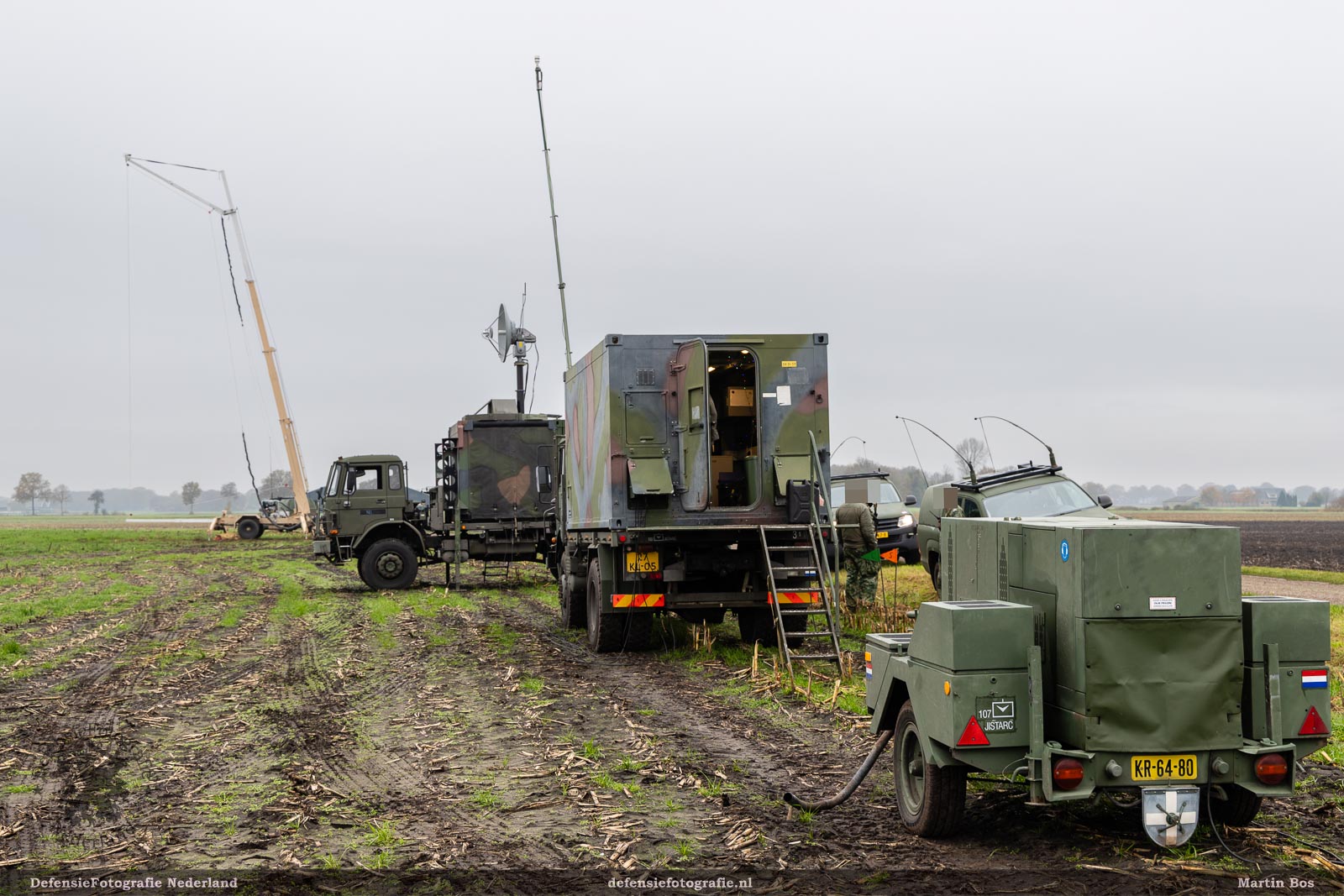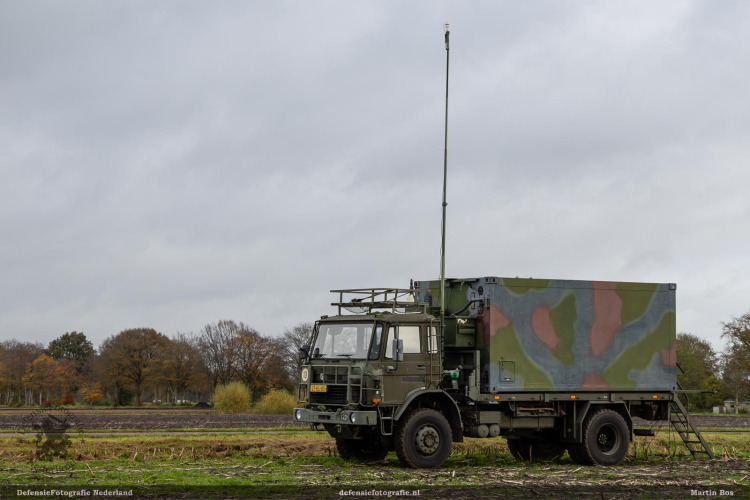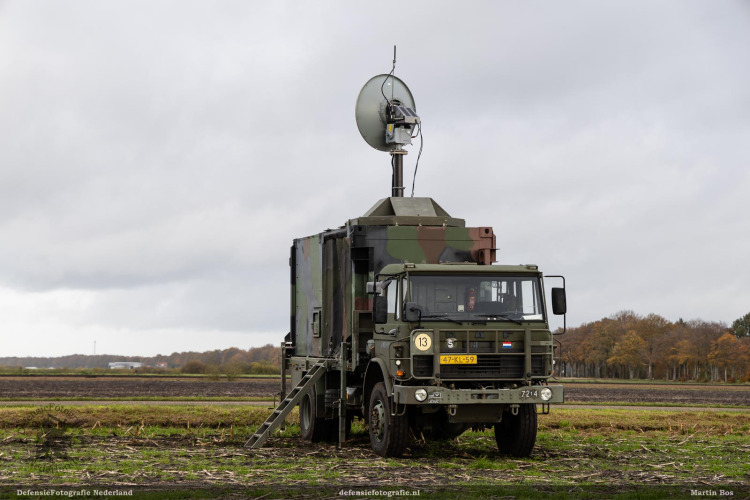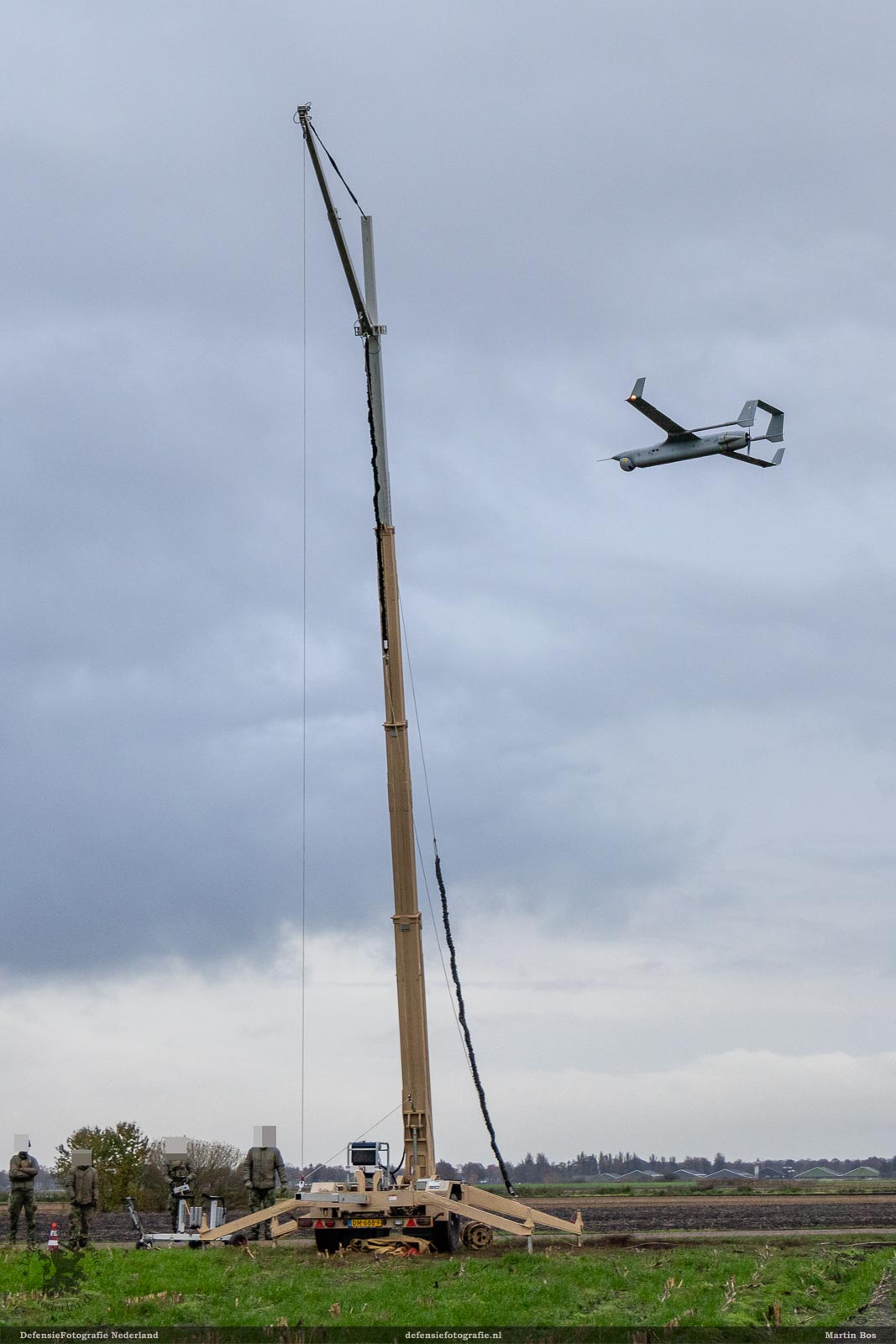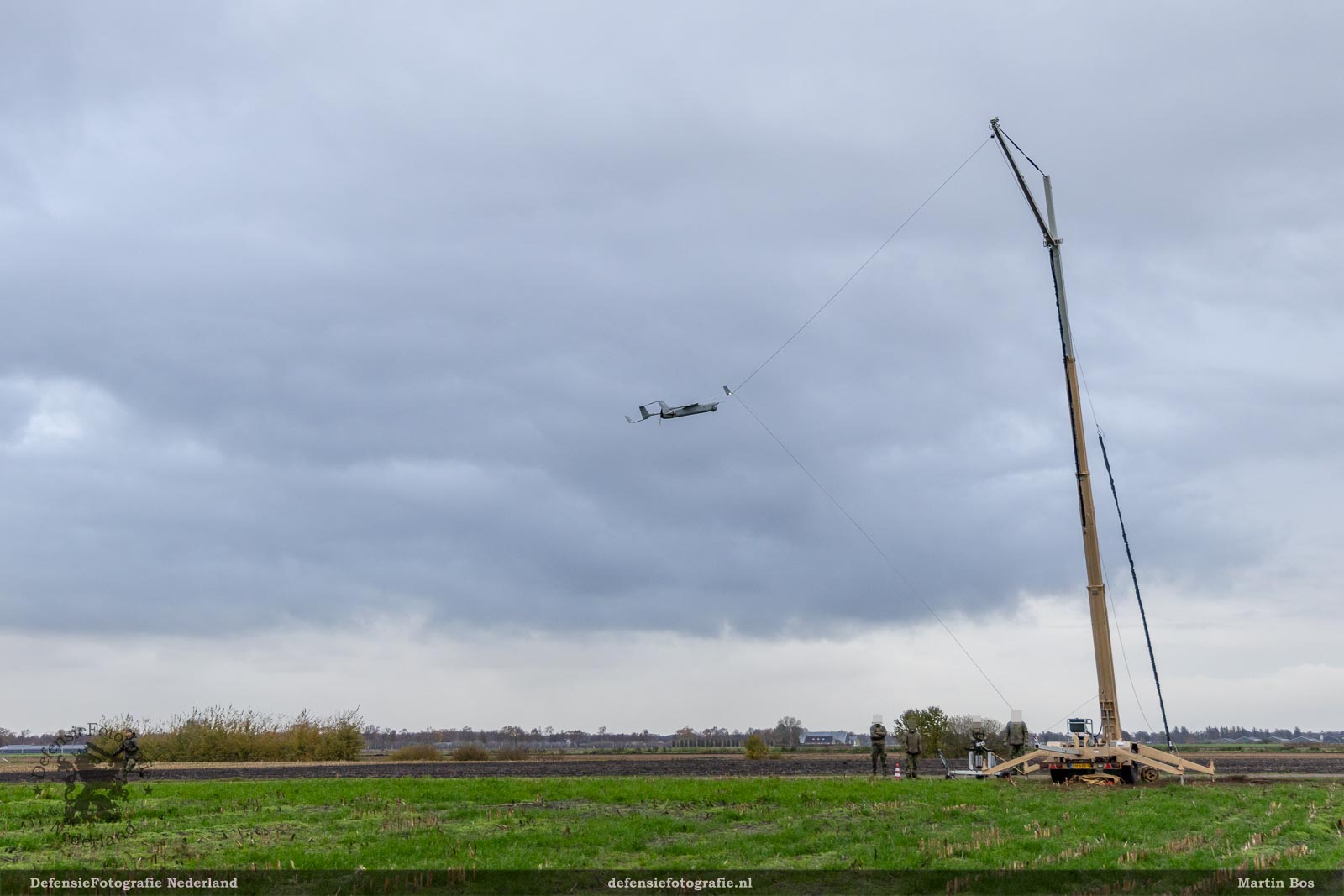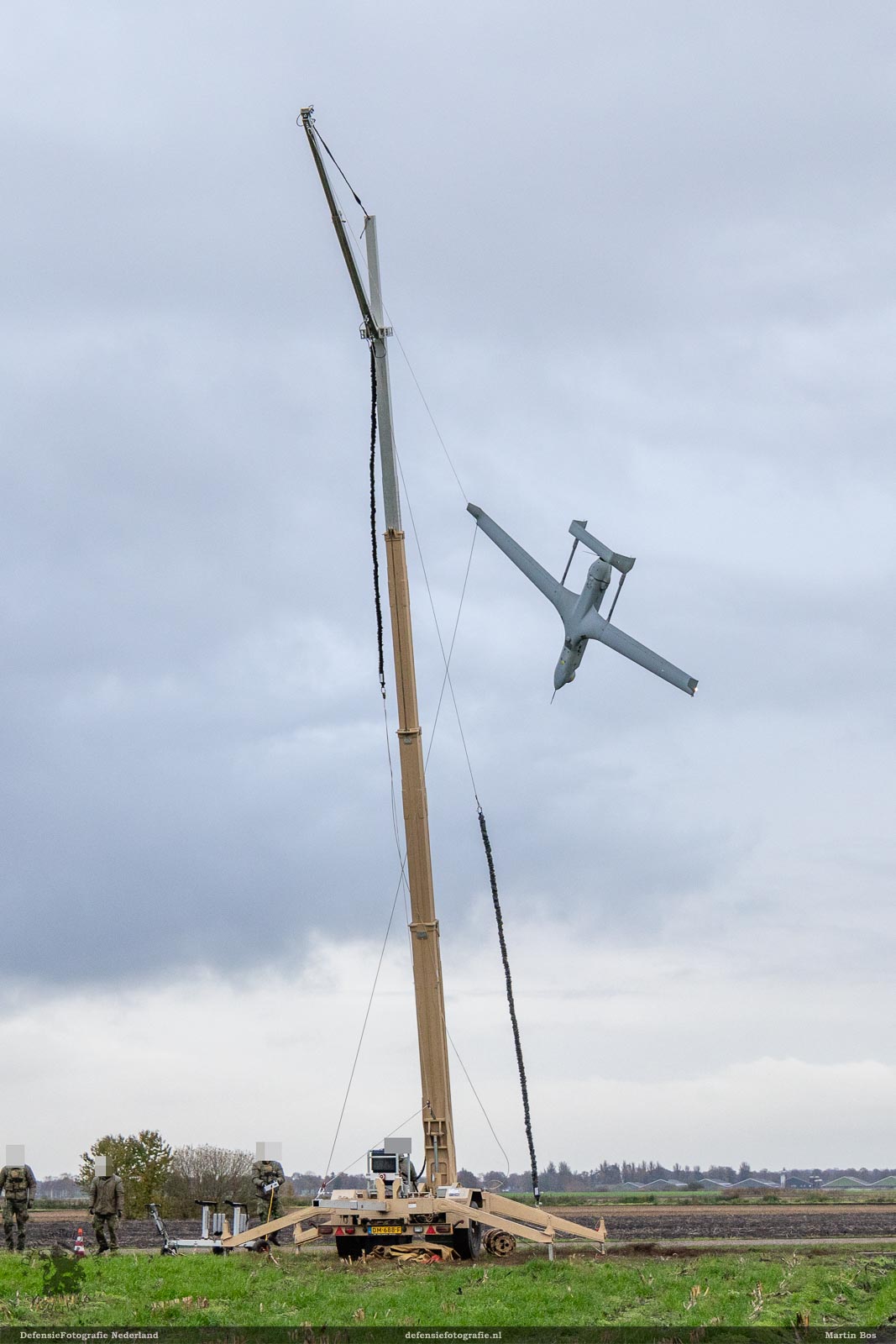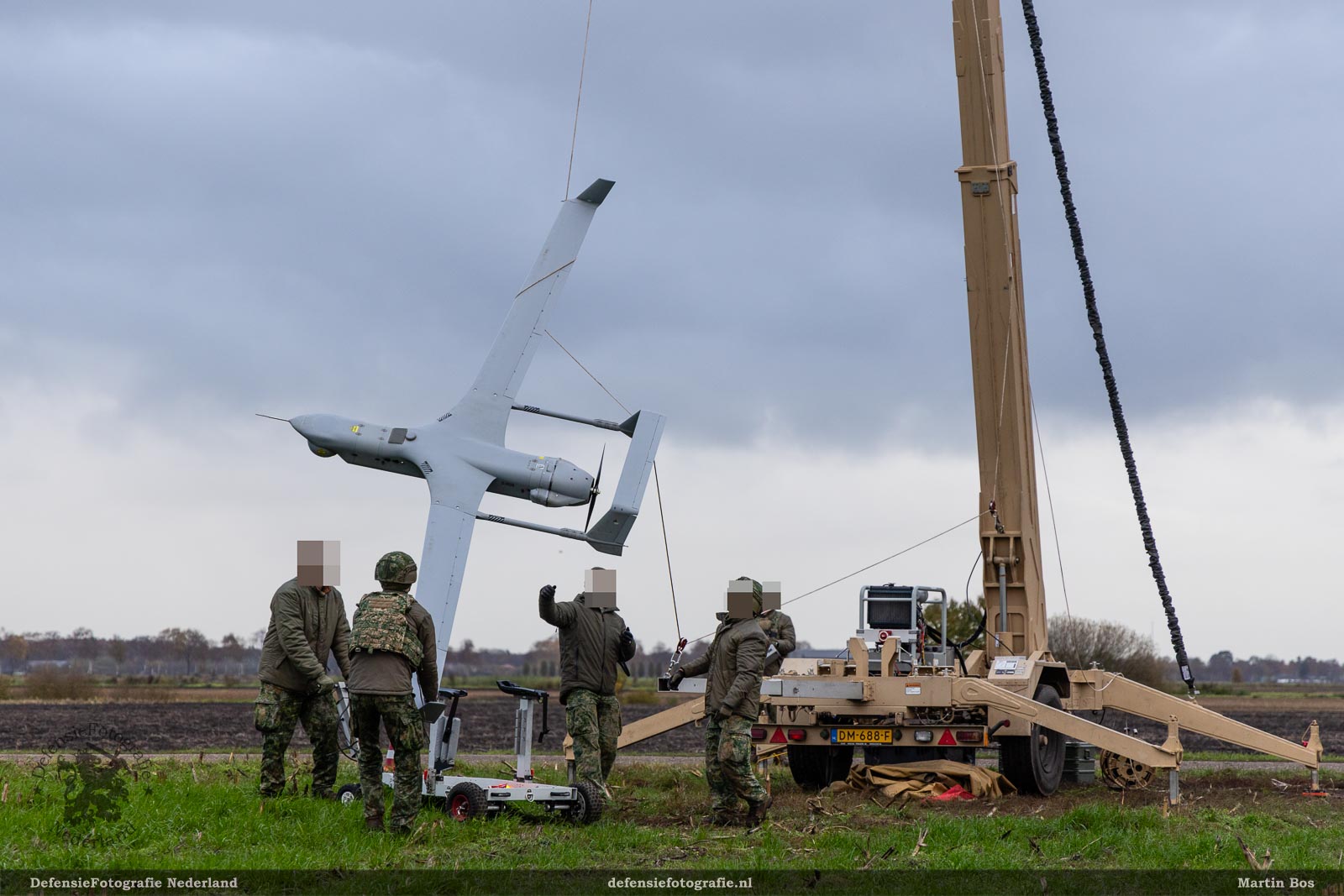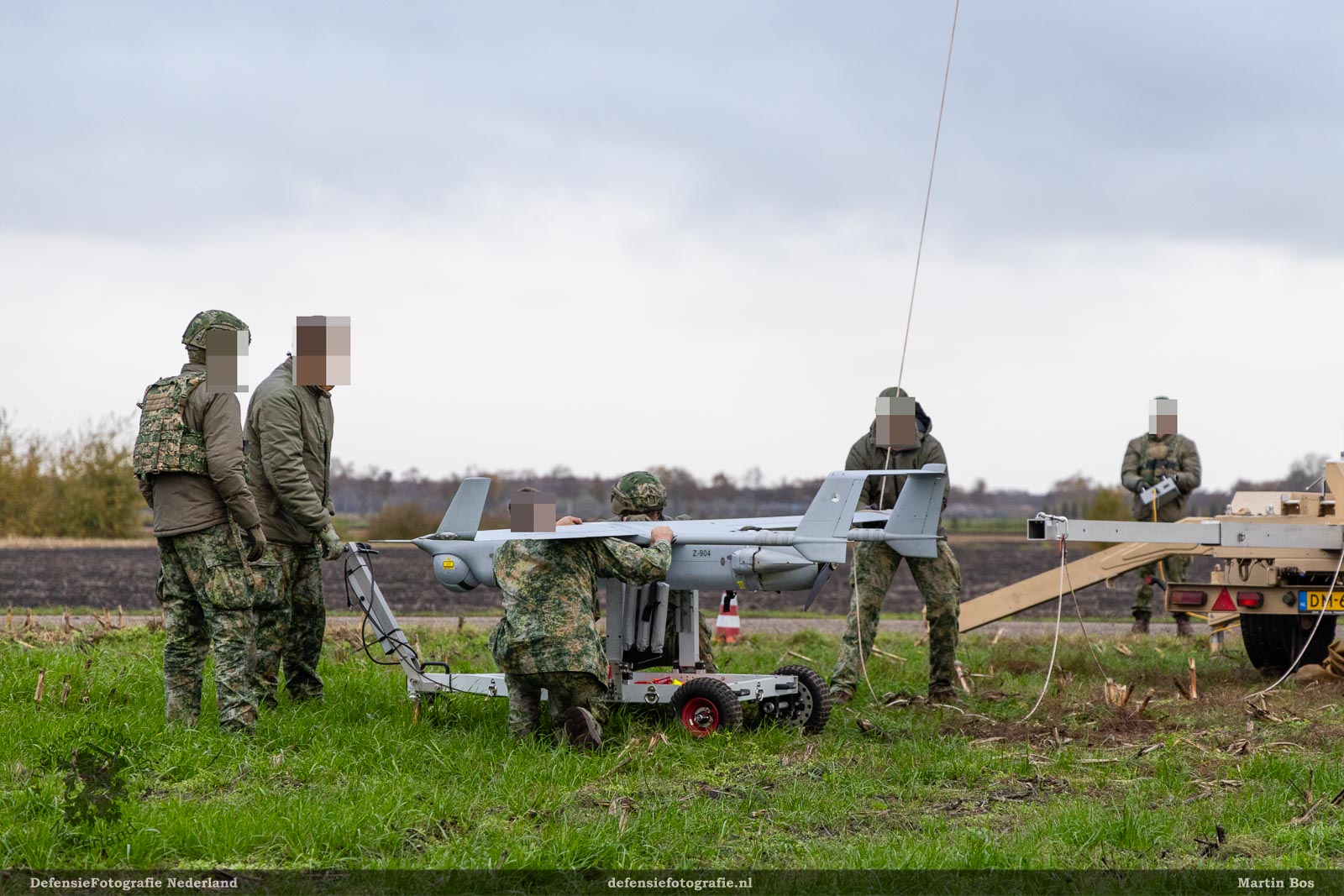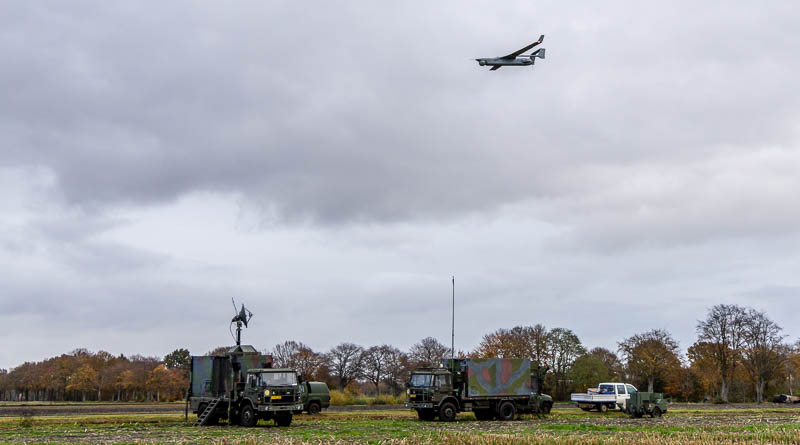
Unmanned Reconnaissance Aircraft above Drenthe
Original article in Dutch here. Translated via Google.
All photos by Martin Bos
: This week, the hum of an unmanned military reconnaissance aircraft can be heard above the Drenthe fields. Defense is practicing with the X-300 Integrator reconnaissance system that has been part of the armed forces since 2019. In this article, we will take you through all the steps involved in a successful reconnaissance flight. The technical information about the X-300 can be found on the separate theme page .
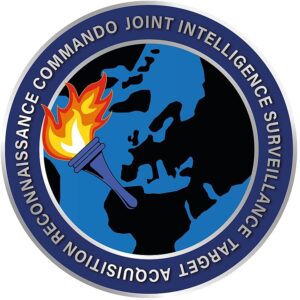
The X-300 Integrator is deployed by the 107 Aerial Systems Battery (107 ASBt) of JISTARC , the specialist intelligence unit of the army. JISTARC stands for Joint Intelligence, Surveillance, Target Acquisition & Reconnaissance Command and is an intelligence unit of our armed forces. The current personnel comes from the army, air force and marine corps. Even someone from the Defence Service Year has found his place there.
Own training 107 ASBt
The X-300 Integrator is a complex and (in terms of weight) heavy system. This means that specialized personnel are needed. The pilots are trained by the manufacturer Insitu in the United States. The 107 ASBt trains its own ground crew at the Tonnetkazerne in ‘t Harde at the Flight Training Organization. However, good flying (and everything that comes with it) is not something you learn only at the barracks. Now that the Dutch army is focusing more explicitly on Main Task 1 (defending the Netherlands and allies), it is also important to practice in our own country. The unit trains between the fields of Drenthe where new employees of the battery put the profession into practice.
The total exercise of 107 ASBt lasts 2 weeks. The Dutch climate in November presents its own challenges. Fog and (drizzle) rain determine the operations. Gusts of wind also limit flying. Flying during the day or in the dark does not matter to the unit.
Prepare and plan
A reconnaissance flight requires thorough preparation. Preparations begin months before the exercise. Landowners give permission for the use of their land, including during the sugar beet harvest. The Dutch aviation authorities have been informed. The unmanned aircraft flies at an altitude of between 500 and 2000 meters.
Time to practice. The complete reconnaissance aircraft fits into a pair of carbon fiber storage boxes transported on a Gryphus. The aircraft is assembled under the shelter of a tent cloth.
Skilled hands simultaneously prepare the launch facility. The generator on the launch facility also provides the power needed to start the aircraft’s electronics on the ground.
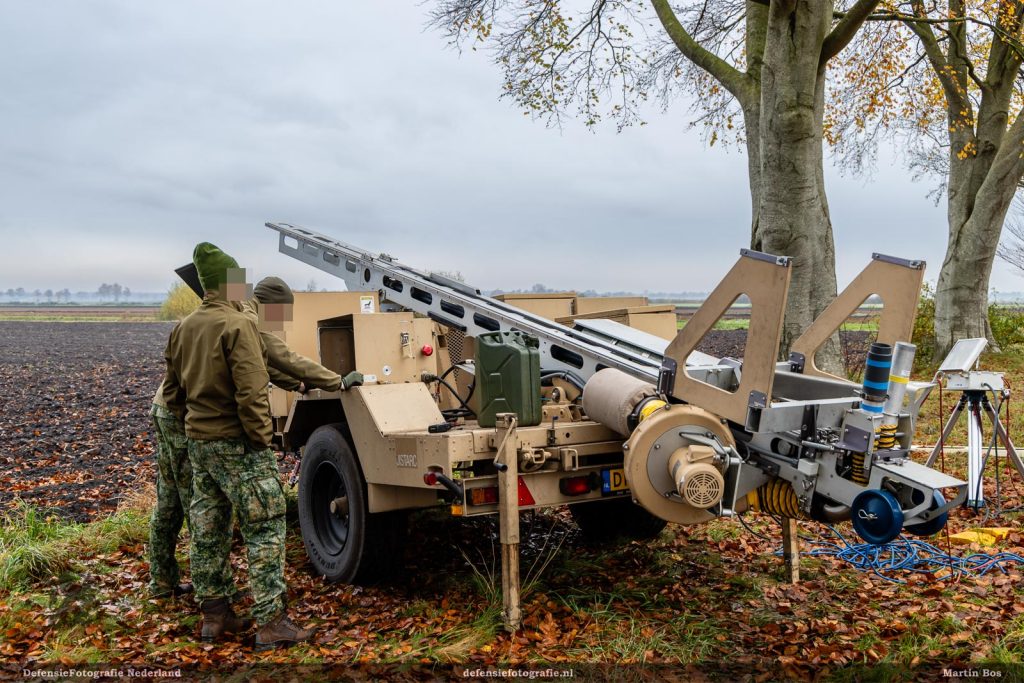
The military performs a large number of preflight checks. Is the fuel system correct? Is the pitot tube (the rod on the front of the aircraft that measures speed and altitude) clean? Does the navigation system work? And of course, refueling is an important part of the process. As is warming up the engine so that it will start and run smoothly later.
If everything is correct, the aircraft is placed on the launch rails. The engine is started. A few final checks and then…
Launch
The launch of the reconnaissance aircraft is done from a launch rail. A compressor fills an air tank and with a push of a button the pressure is released and the take-off begins. With an enormous force the aircraft gains so much speed that it can continue on its own at the end of the rails. After all the noise of a running engine at full speed, it is suddenly quiet again between the fields. Within a few seconds it is out of sight.
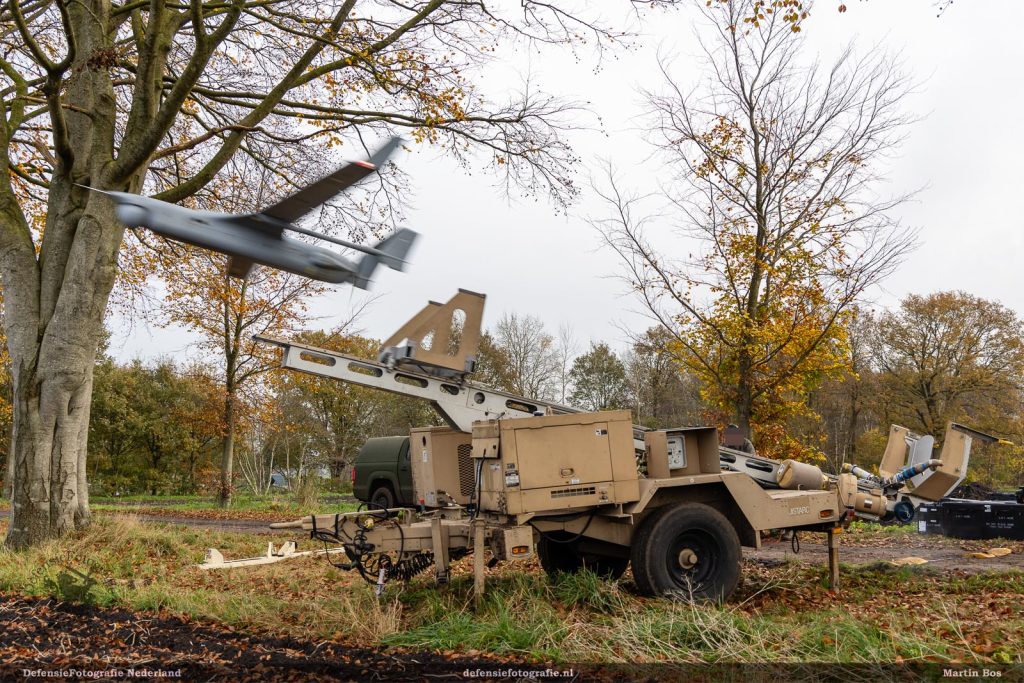
Explore
The actual flight is monitored from two DAF four-tonners. With one vehicle, the connection with the reconnaissance aircraft is maintained with a beam transmitter. From the container on the other DAF, the aircraft is controlled and the reconnaissance equipment is operated. The actual interpretation of the video images is in a different location, all images are forwarded there. A generator provides the whole with electricity.
The vehicles are now standing here in the open in the field. This exercise is about training the crew to operate the reconnaissance system. There is therefore no need to operate hidden or camouflaged. Something that is of course different in a battle.
The unmanned aircraft flies in Dutch airspace where others (civilians and military) also fly. The aircraft is therefore not ‘camouflaged’ but made visible. During the entire flight, the aircraft transmits a radio signal so that it can be followed by everyone.
To land
After hours, the X-300 flies above our heads again. Ready to land. This landing is done via the so-called ‘skyhook’. The aircraft flies against a rope and hooks onto it. In this way, no runway is needed. The crew then lowers the aircraft in a controlled manner onto the transport vehicle. The catching system is next to the vehicles in the open field. In an operational situation, the catching system can of course be placed anywhere. Or only be there when an aircraft has to land.
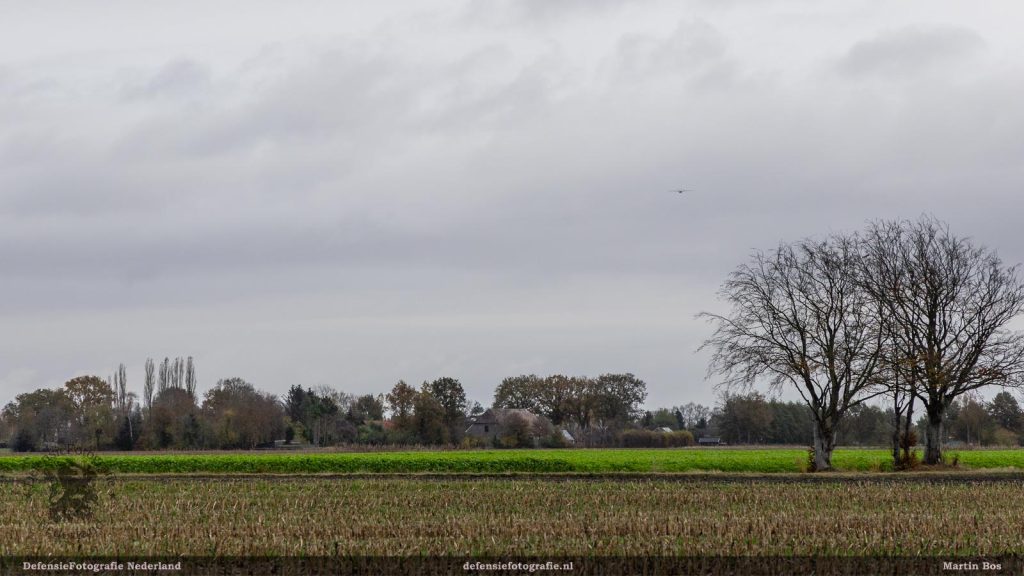
Aftercare
The unmanned reconnaissance aircraft is safely back on the ground. The soldiers are completing the last part of the operation. The aircraft is completely checked and the on-board computer is read out. Fuel is sucked out of the aircraft and the exercise is briefly evaluated.
I am very proud of the men of 107 Aerial Systems Battery who made this possible, all the preparations and the hard work of the platoon this week made the flights possible. The mechanics of the Maint also provided great service. You see, believe in a goal and put your shoulders to the wheel together, then a lot is possible. The “new” personnel has shown a nice upward trend. And the image analysts are also well trained with a realistic scenario. This exercise is already a great success.
Chief Warrant Officer Frank
For today’s exercise, this aircraft is packed back into its storage boxes. Another Integrator is allowed to fly. With their experience, 107 ASBt can keep an aircraft in the air continuously!
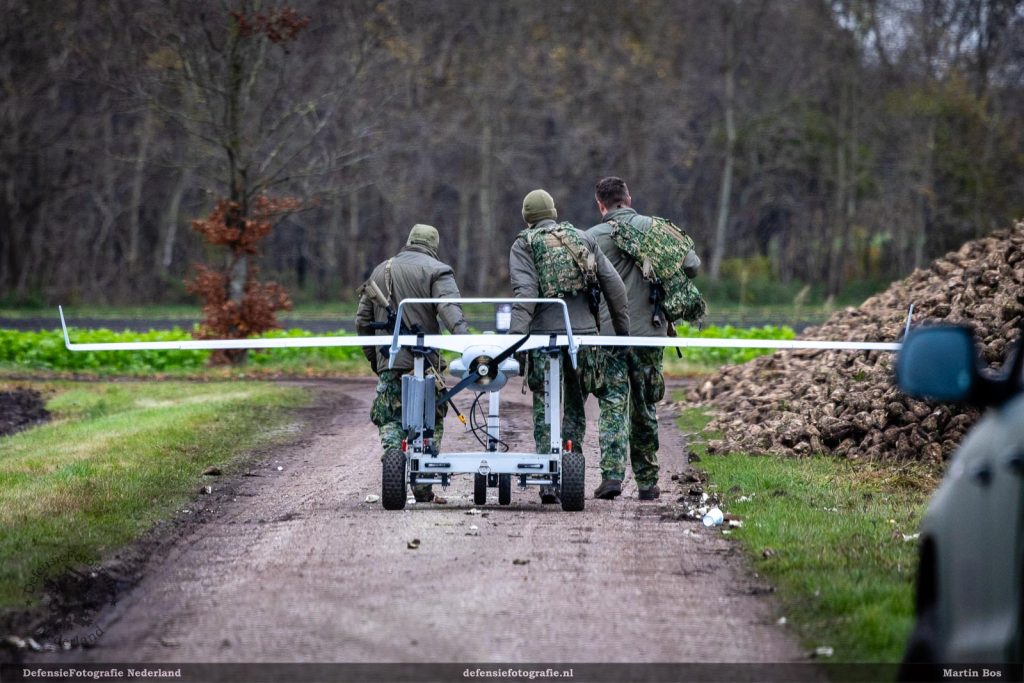
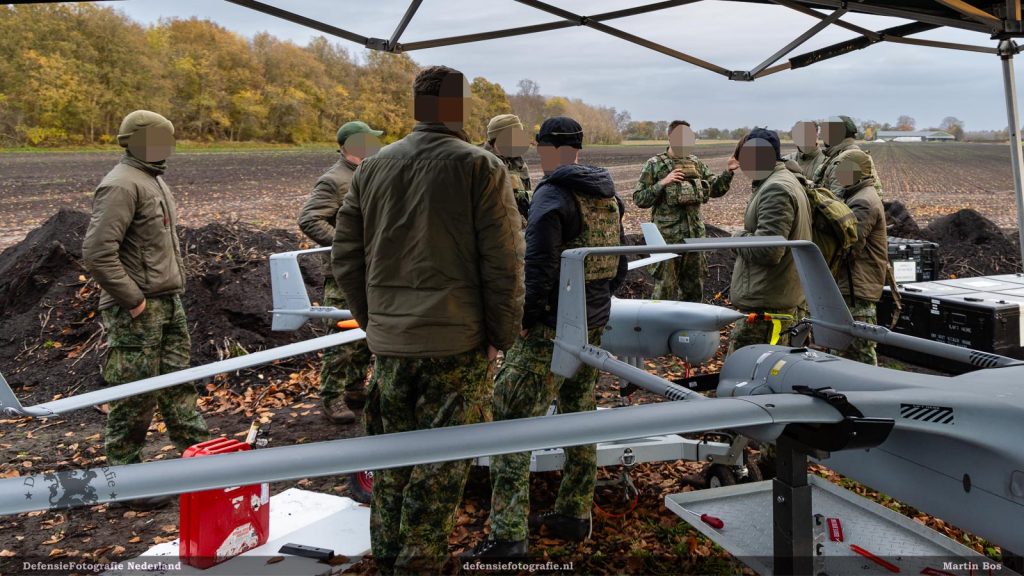
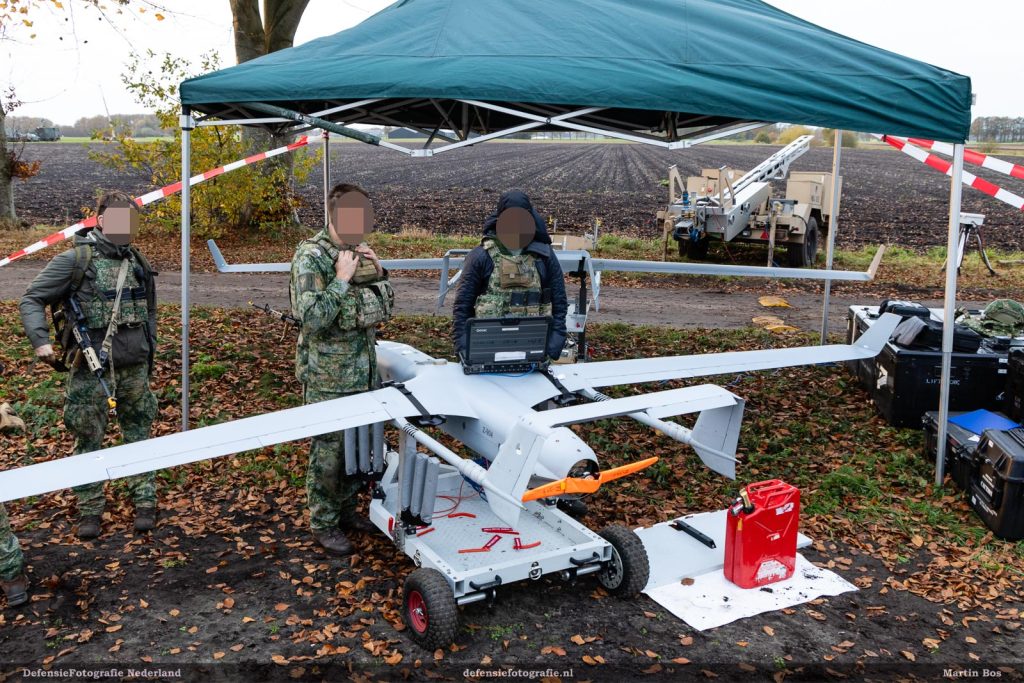
Postscript: At the request of Defence, all employees of 107 ASBt have been made unrecognisable in this article. Rough editing was chosen because subtle adjustments can be (partly) undone with modern software.
related news
Insitu Announces Kinetic Capability for the Integrator Uncrewed Aircraft System (UAS)
September 05, 2023Read More
Related News
Italian Navy Frigate Luigi Rizzo Completes ScanEagle UAV Acceptance Trials
Frigate Luigi Rizzo has recently completed the acceptance activities of the ScanEagle remotely piloted aircraft by the Navy in the Tyrrhenian Sea
Read More »Insitu Announces Proliferated-Low Earth Orbit Satellite Control for Integrator UAS with 2,000 Nautical Mile Range
This capability enables Integrator to fly up to 2,000 Nautical Miles (NM) point-to-point with 27.5 hours of endurance, the longest range/endurance of any small UAS in its class.
Read More »Insitu Announces Proliferated-Low Earth Orbit Satellite Control for Integrator UAS with 2,000 Nautical Mile Range
This capability enables Integrator to fly up to 2,000 Nautical Miles (NM) point-to-point with 27.5 hours of endurance, the longest range/endurance of any small UAS in its class.
Read More »